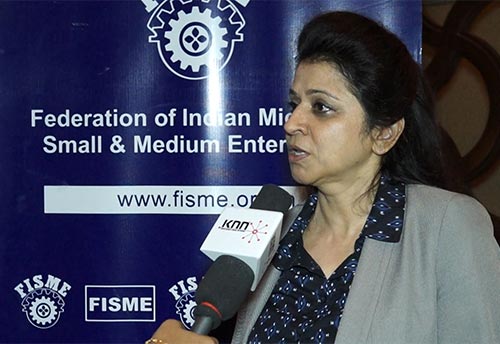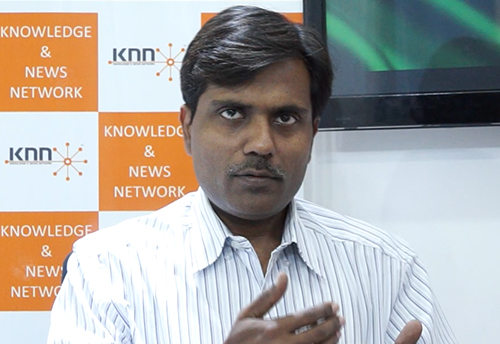The future for SME lending appears bright
Updated: Aug 13, 2013 02:20:18pm

Mumbai, Aug 13 (KNN) Under the global banking norms called Basel-III, banks have to follow stricter lending rules and provide for stringent provisioning which entail higher cost that would eventually be passed on to the borrowers. There have been concerns over the issue, particularly in regard to small borrowers.
Considering that the Basel III norms are being implemented in India in a phased manner from April this year, Partner with SME BOTS LLP (a firm advising smaller companies on IPOs and Financial advisor to FISME), Rajesh Dubey spoke to KNN about the impact of Basel III norms on SMEs in India.
1. Will bank loans to small and medium enterprises become expensive with the implementation of Basel III banking norms?
Basel III has been brought out in response to the risks that large financial institutions faced leading to the global financial meltdown. In India, RBI has issued a circular to implement the regulatory framework and capital requirements since April 13 in a phased manner. It is likely to be fully implemented by March 31, 2018.
The objective of Basel III guidelines is to maintain capital at a level and ensure its quality, inter alia, to better absorb losses arising for banks both on a going concern and also on a gone concern basis. It also raises the standards for the supervisory review process (Pillar 2) and public disclosures (Pillar 3) etc. Basel III rightly identifies the chances of systemic risks getting in-built when credit growth is expanding at a very fast pace and where the incentives for the managers are linked to the performance of the bank or financial institutions in the short- to mid-term basis.
To plug this possible deficiency, it requires
a) creating a capital conservation buffer, a reserve which could be used in case capital level falls due to any of the risks that a bank or financial institution may face; and
b) Banks to develop an internal capital adequacy assessment process (ICAAP) and RBI, the regulatory body, to follow a robust supervisory review and evaluation process (SREP).
The mechanism aims for complying with the regulatory requirement of capital, risk assessment as the minimum stipulations. If for any reason, either the bank or the RBI finds that some of the risks are not covered or where additional risk capital buffer would be required, the CRAR requirement can be increased beyond the minimum 9 per cent stipulated level.
Given this, it is possible for the banks to become risk averse. Also, in stressed economic conditions, it is likely that the fresh opportunities available would rather remain restricted. Capital raising from the market too is likely to be at higher cost. One cannot confidently conclude that a regulatory prescription arising out of setbacks from the largesse in credit assets or banks’ assets increase (2007 era), would be an ideal solution during periods of economic slowdown (present scenario). Theoretically though, with increased capital requirement the interest cost on credit is likely to be pushed northwards. Otherwise how can a better return for the equity be assured?
It would have been ideal to augment the risk capital resources of the SME sector as well. It needs to be made clear that SMEs too would require equity more and less of debt in times of stress and uncertain scenarios - like in the present conditions. Fixing or trying to plug possible leakages in the banking sector alone, may not be helpful for the SME sector, or for that matter, the entire economy.
2. Will the banking procedures for availing of loans by Indian SMEs become more cumbersome?
The process of credit risk assessment has not been changed significantly under Basel III. Banks are free to use standardised approach for credit risk assessment wherein they would rely on the credit ratings assigned by credit rating agencies as a measure for capital allocation. However, as and when banks are able to develop a sound internal risk assessment framework, they can shift towards the same. I don’t think there would be a major change in the procedures for availing loan. It would, as hitherto, vary from bank-to-bank based on banks’ strengths and processes developed over the years.
3. Is there a possibility of the SMEs shifting more to unregulated and informal sources of finance once Basel III norms are strictly enforced?
I don’t think it is likely for an SME to shift borrowing to unregulated and informal sources just because of Basel III regulations. If the FSLRC recommendations are implemented, the regulatory arbitrage available to unregulated or loosely regulated entities is likely to diminish significantly. With the passage of Companies’ Bill, 2012 too, where it would be possible to convert sole proprietary concerns into one-person companies and build a greater transparency around the performance, the information asymmetry would diminish. If the measures are implemented in letter and spirit and banks/financial institutions take proactive steps in providing credit based on performance and not limit lending linked to security, the future for SME lending appears bright.
Background: Basel III norms are guidelines framed by a committee of central banks that is based in Basel, Switzerland. The Reserve Bank of India is also a member of this committee. The norms aim to toughen up the banking system in every country to withstand financial shock.
They focus on the risks that banks are vulnerable to, particularly after the crisis in the banking sector, which was triggered by the problem in the US sub-prime mortgage market. Basel III aims to plug the gaps in the existing Basel II guidelines. The new norms will be made effective in a phased manner from January 1, 2013 and implemented fully from March 31, 2018.
The guidelines will ensure that banks are well capitalized to manage all kinds of risks. The existing norms stipulate that banks should maintain Tier-I capital, or core capital, and Tier-II capital that comprise instruments with debt-like features. (KNN/SD/ES)











